In this post, we will show you how to permanently disable Delivery Optimization using REGEDIT, GPEDIT, Settings, etc. to stop Windows 11/10 from sharing or uploading Updates over the internet to other computers.
Delivery Optimization is a client update service that uses both local and non-local devices with the help of the internet to deliver Windows updates. This service combines data from Microsoft data centres and local devices. The combined data helps to deliver a complete update at a low bandwidth cost – and also helps in fast updates. It allows your computer may get updates from or send updates to neighboring computers or computers on your network. Although this would mean that you get updates much faster, it would also leave you behind with bigger bandwidth bills. You can stop Microsoft Windows from using your bandwidth.
Delivery Optimization is essentially a very useful feature in Windows. However, some users might experience general PC slow performance, high disk usage, and/or high CPU usage. In which case, it might serve well to disable this service.
How to Disable Delivery Optimization in Windows 11/10
If you want to stop your Windows 11/10 PC from sharing or uploading Updates over the internet to other computers, you will have to turn off Delivery Optimization, using any one of these methods:
- Via Windows Settings
- Using Group Policy
- Using Registry Editor
- Using Windows Services console
- Enable Metered connection.
Let us see them in detail.
1] Turn off Delivery Optimization Windows Settings
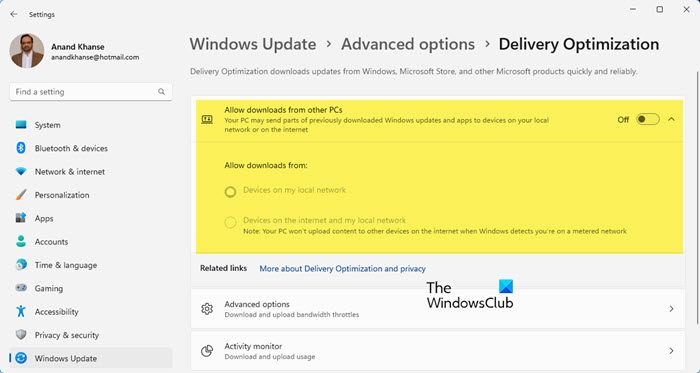
To turn Delivery Optimization off in Windows 11:
- Open Windows 11 Settings
- Open Windows Update section
- Click on Advanced options
- Open Delivery Optimization under Advanced options
- Uncheck Allow downloads from other PCs.
To turn Delivery Optimization off in Windows 10, follow these steps:
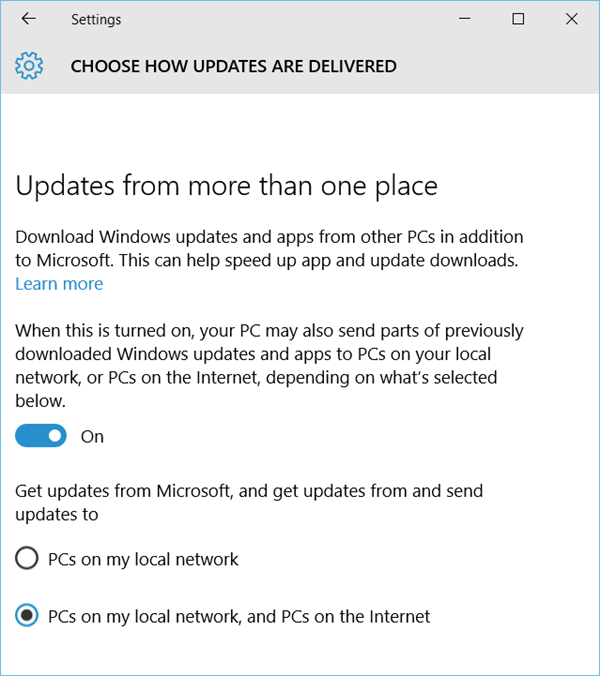
- Open Windows 10 Settings
- Click on Update and Security
- Under Windows Update, click Advanced Options on the right side of Window
- Under Updates from more than one place, Click on the Choose how updates are delivered and then move the slider to Off position, to disable Windows Update Delivery Optimization or WUDO.
- Move the slider to OFF so that your PC cannot download updates from anywhere other than Microsoft servers; if you think you can afford to download updates from PCs on your network, keep the slider in ON position and select PCs On My Local Network.
2] Disable Delivery Optimization via Group Policy
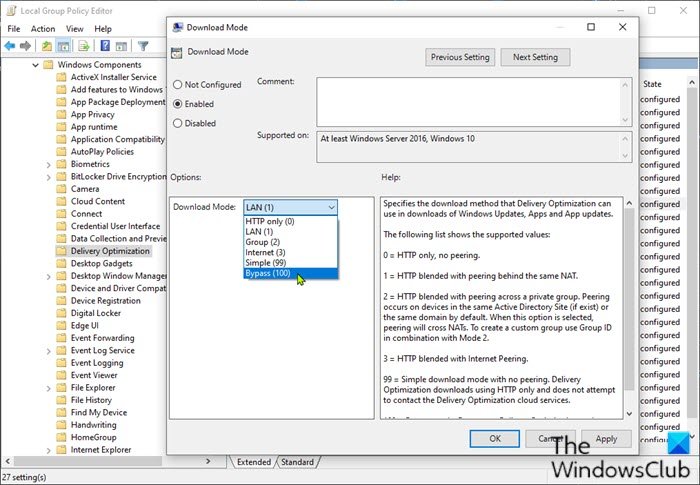
Do the following:
- Press Windows key + R to invoke the Run dialog.
- In the Run dialog box type
gpedit.mscand hit Enter to open Group Policy Editor. - Inside the Local Group Policy Editor, use the left pane to navigate to the path below:
Computer Configuration > Administrative Templates > Windows Components > Delivery Optimization
- On the right pane, double-click on Download Mode option to edit its properties.
- With the Download Mode policy opened, set the radio button to Enabled.
- Next, scroll down to Download Mode, click the drop-down and select Bypass.
- Click Apply > OK to save the changes.
Next, you’ll need to limit the bandwidth which will help in controlling the internet usage.
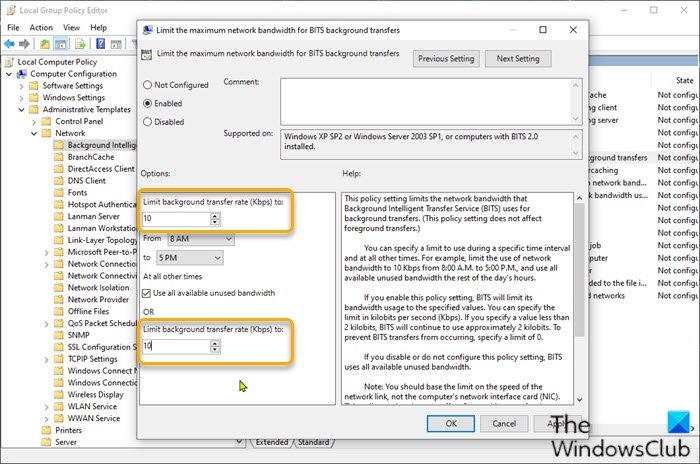
- Still in GP Editor, on the left pane, navigate to the path below:
Computer Configuration > Administrative Templates > Network > Background Intelligent Transfer Service (BITS)
- On the right pane, double-click on Limit the maximum network bandwidth for BITS background transfers option to edit its properties.
- In the policy window, set the radio button to Enabled.
- Next, scroll down to Limit background transfer rate (Kbps), click the drop-down and specify 10.
- Click Apply > OK to save the changes.
For Windows 11/10 Home users, you can add the Local Group Policy Editor feature and then carry out the instructions as provided above or you can do the registry method below.
3] Disable Delivery Optimization via Registry Editor
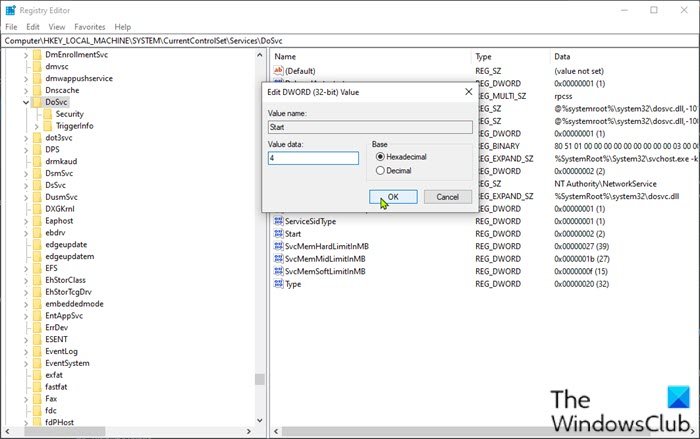
Since this is a registry operation, it is recommended that you back up the registry or create a system restore point as necessary precautionary measures. Once done, you can proceed as follows:
- Press Windows key + R to invoke the Run dialog.
- In the Run dialog box, type
regeditand hit Enter to open Registry Editor. - Navigate or jump to the registry key path below:
Computer\HKEY_LOCAL_MACHINE\SYSTEM\CurrentControlSet\Services\DoSvc
- At the location, on the right pane, double-click the Start entry to modify it.
- Type 4 in the Value data box.
- Click OK to save the change.
- Close the Registry Editor window.
- Reboot your computer to save the changes.
On boot, you can check the status of Delivery Optimization service.
Do the following:
- Press Windows key + R to invoke the Run dialog.
- In the Run dialog box, type
services.mscand hit Enter to open Services. - In the Services window, scroll and locate the Delivery Optimization service.
- Double-click on the entry to check its properties.
Now you should see the service is disabled on your computer. If not, do the following:
- In the properties window, click the drop-down on the Startup type and select Disabled.
- Click Apply > OK to save changes.
4] Using Windows Services Manager
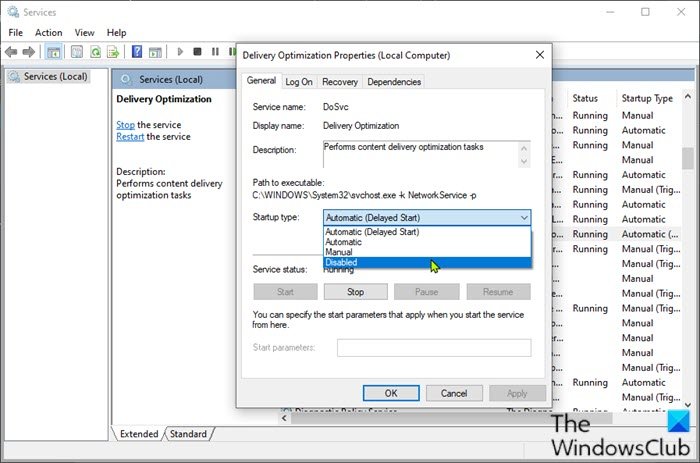
Sign in as an administrator and open Services Manager and locate the Delivery Optimization service. Double-click on it to open its Properties box and set its Startup type to Disable. Click Apply and restart your PC.
5] Enable Metered connection
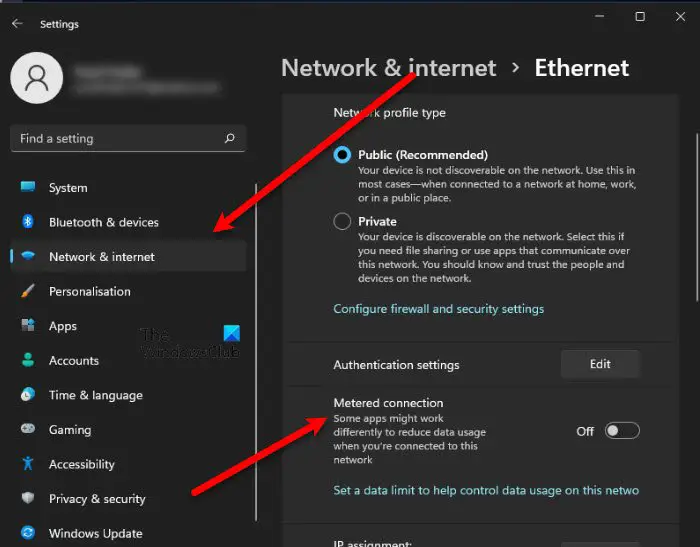
Windows 11 or Windows 10 will not use Delivery Optimization to upload or download updates when a Metered connection is on. So enable Metered connection on your PC, to stop it from sharing Windows Updates to other computers.
This is how you can disable or turn off Delivery Optimization in Windows 11/10.
NOTE: From time to time you should check this setting as I have found that this setting reverts to On, every now and then – probably after some Windows Update.
Is it okay to disable Delivery Optimization Service?
Yes it is OK to disable Delivery Optimization Service on Windows 11/10. If you are on a metered connection, turn it off to reduce data usage!
Windows 11/10 can now also send parts of apps or updates that you have downloaded using Delivery Optimization to other PCs. You can now also limit Windows Update bandwidth.